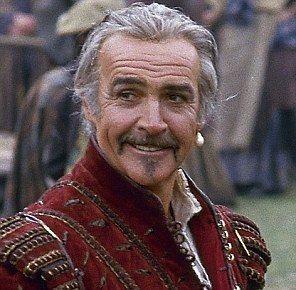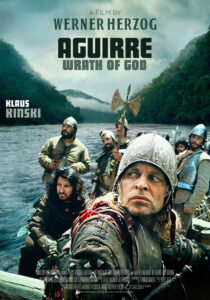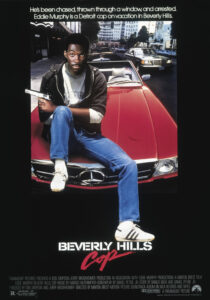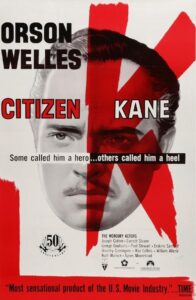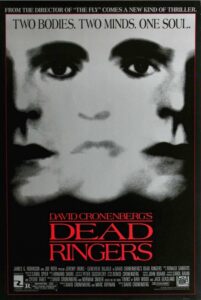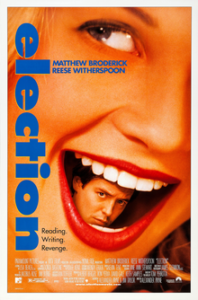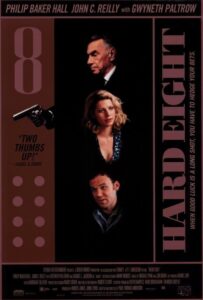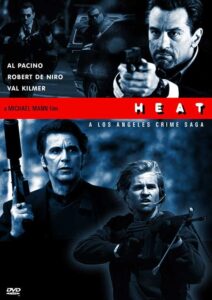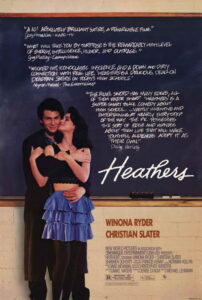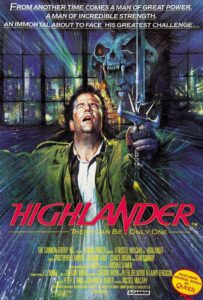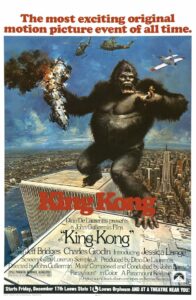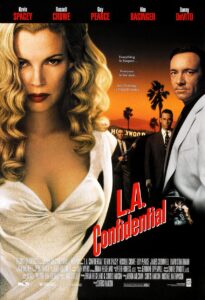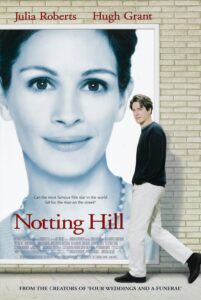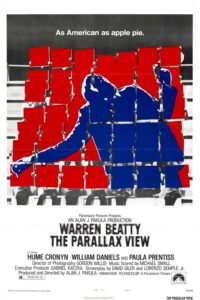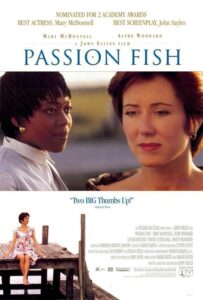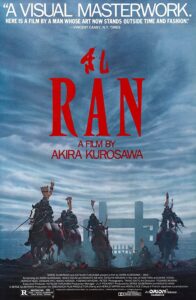I started with Netflix, notorious for having a shallow catalogue of older movies, then went on to Disney’s new service, Star. Now I’m having a look at Prime, which actually boasts a bigger variety of films 21 years or older. Here’s some of the best available now:
Aguirre: The Wrath of God (1972)
This is Werner Herzog’s epic tale of Spanish conquistadors in search of the so-called city of gold, El Dorado, a city that may have been a story concocted by the Incas, with the Spaniards (all speaking German, of course) making the attempt all in the name of God. The film’s rep is forever tied to the legendary on-set battles between director Herzog and lead actor, Klaus Kinski. Maybe Kinski was afraid for his life since Herzog has his actors walk along rocky precipices and through the mud up to their thighs while wearing armour, or maybe Kinski was unreasonable, or maybe a bit of both. The film also gives a voice to the indigenous people and to the darkness in their future with the Spaniard settlers, coming in tandem with the endless evangelical presumption of the church. It boasts a terrific sound design and an amazing soundtrack by German Krautrock band Popol Vuh.
Beverly Hills Cop (1984)
Eddie Murphy’s first solo starring role coincided with the peak of his stardom, following on the heels of his Delirious stand-up video from the year before. The film has Detroit cop Axel Foley (Murphy) investigating the murder of an old friend while being something of an audience surrogate bearing witness to the rampant consumer culture going on in LA, as well as being black, and being from a working class background. Overlooking an ugly streak of homophobic humour and the baked-in idea that cops breaking the rules makes them better at their jobs, the film still delivers a lot of warmth riding on Murphy’s unhinged talent. Something that people might not think about right now when watching this is that in 1984, it was still a novelty to hear people in a comedy use the f-word so flagrantly. Murphy had already established his use of language in his stand-up, and he uses the same language with a lot of skill here. Everyone else in the film is good, too: Lisa Eilbacher, Bronson Pinchot, Paul Reiser, Ronnie Cox, Stephen Berkoff as the heavy, and watch out for Damon Wayans Jr who gets a scene as the Banana Man. Murphy actually has to do some dramatic acting as well as be funny — he’s great at all of it.
The Cotton Club: Encore (1984)
Francis Ford Coppola’s musical drama is about a Harlem club in the ‘20s and ‘30s, where the African-Americans can only get in as performers or staff while the clientele is all white. It tells the parallel stories of a dancer, Delbert ‘Sandman’ Williams, played by the brilliant and much missed Gregory Hines, and a trumpet player named Dixie Dwyer, played by Richard Gere. Sandman chafes at the racism, but has achieved at least one dream: he’s playing the Cotton Club with his brother Clay (Maurice Hines, Gregory’s actually brother). He meets another performer Lila (Lonette McKee), with whom he falls in love. Dixie is a talented pianist and horn player, but a gangster, Dutch Schultz (James Remar, a caricature) forces him to take a job watching over his girl, Vera (Diane Lane). Naturally Vera and Dixie fall for each other. We get a lot of great musical and dance numbers, and a stellar cast in support: Bob Hoskins is Owney Madden, the owner of the club, while Nicolas Cage as Dixie’s brother gets a job with Dutch as a gunsel. Other familiar faces include Allen Garfield, Laurence Fishburne, Lisa Jane Persky, Jennifer Grey, and Tom Waits. Where the original version is 2 hours and 7 minutes, and this Encore edition is 2 hours 18 minutes. Based on what I’ve read, I gather the studio forced Coppola to cut some of the musical numbers and more of the African-American storyline elements, so those have been restored, while there are also a few scenes in this new version that have been removed.
Chinatown (1974)
Anyone who never wants to see a Roman Polanski movie ever again, I entirely understand. I’d be happy to see the convicted rapist in jail the rest of his life, and I’ll probably still be watching Chinatown for the rest of mine. It’s a neo-noir set in pre-war Los Angeles and based on an actual historical conspiracy to steal water from surrounding areas to feed a demand in the city. Jack Nicholson is private investigator JJ Gittes, entirely vain and entirely out of his depth, starring opposite a never better Faye Dunaway and actor/director John Huston. Scripted by Robert Towne, the sense of impending doom in the film’s last act is like almost nothing I’ve ever seen in the movies.
Citizen Kane (1941)
Worth going back to see now that David Fincher’s Mank is very much in the public consciousness with the recent Oscars. Is Orson Welles’ first feature the greatest movie ever made? I’m not sure about that, but the ways in which so many elements of the movie work so well, 80 years later, lays claim for it being at least one of them. The script, the visuals, editing, and that favourite Hollywood pursuit — the tragedy of an American business maverick — all adds up to something special.
The Conversation (1974)
It’s Francis Ford Coppola again with the movie he made between the first two Godfather films. Some claim it’s at least as good as those, a chilling paranoid thriller about a Catholic surveillance man (a never better Gene Hackman) employed to listen and record a couple’s conversation in a public space, who begins to believe his client might intend their murder. The tech may seem quaint these days, but the sound editing and deliberate, confident storytelling is as fresh as ever.
Dead Ringers (1988)
Having reached a whole new audience with The Fly, David Cronenberg unleashed what may be his most frightening film — which is really saying something. The story of twin gynaecologists (both played by Jeremy Irons, stunning in the dual roles) who both start an inappropriate relationship with one of their patients (Geneviève Bujold) who, at first, can’t tell them apart. It gets really creepy when they start to lose their grip on reality in a haze of paranoia and drug abuse. Incidentally, when Irons finally won an Oscar for a role in another movie, he remembered to thank Cronenberg.
Election (1999)
Reece Witherspoon is so good in Alexander Payne’s terrific second feature that in some respects it feels like she’s never quite escaped Tracy Flick. Tracy is a deeply ambitious high school student whose every moment is devoted to becoming student class president. Her campaign is sabotaged by a teacher, Jim McAllister (Matthew Broderick), who finds her vulgar and unpleasant. It’s not hard to see Jim’s perspective, but as we go along his venal desperation paints him in an entirely different light. The picture ends up being a darkly funny allegory for American politics, if not the baleful Darwinism of high school life.
Hard Eight (1996)
This one’s a real pleasure to stumble on here since it’s been pretty much unavailable on physical media for years. This is Paul Thomas Anderson’s first film, which was also known as Sydney. It’s a grim little crime drama about a trio of hard-luckers: Sydney, a professional gambler played by Philip Baker Hall, John, his protege played by John C. Reilly, and Clementine, a cocktail waitress and sometime prostitute played by Gwyneth Paltrow. Also starring Samuel L Jackson and a cameo from Philip Seymour Hoffman, it’s a grimy movie about unhappy people that will stick with you like coffee breath, but it’s absolutely essential for fans of Anderson’s work. Who isn’t one?
Heat (1995)
It’s hard to believe now how critics crapped on this picture when it was first released. They called it self-conscious, Mann’s effort to do his own epic crime drama a la The Godfather. Must have been the casting — Robert DeNiro and Al Pacino in the key roles — that confused those hacks, because otherwise this picture really couldn’t be more different than Coppola’s epic. It’s a chilly, unpredictable LA crime thriller. It trades in cops and robbers and existential angst rather than generational drama, and pits two characters, opposite sides of the same coin, and their teams against each other.
Heathers (1989)
At the time, Heathers was a nail in the coffin of the teen movie John Hughes had made so popular. A dark, twisted comedy, it reveals the real horror in the halls of high school, the total absence of empathy when being cool is the highest achievement. Without Heathers there’d be no Election (see above) and no Mean Girls. Its cultural mark has been made, and extended to a TV series and even a musical. Recently it’s been reassessed by the next generation with a much more critical eye, but for us Gen-Xers, it’s still a milestone.
Highlander (1986)
With Sean Connery having recently passed, there’s never been a better time to rewatch this bizarro fantasy about a small group of immortals battling each other through time — “There can be only one,” is the line to remember. Christopher Lambert is the lead, a French actor, playing a Scot. The Scot, Connery, is playing a Spaniard/Egyptian. This makes no sense at all, but just go with it. Director Russell Mulcahy brings a lot of visual style, working the Scottish and New York locations. The picture’s MVP is veteran character actor Clancy Brown as immortal villain with the growly voice, The Kurgan — he’s a sword-swinging joy. And if you’re looking for more Connery in peak form, consider The Hunt For Red October, also here on Prime.
Jaws (1975)
If Jaws has the dubious distinction of having created the summer blockbuster season, it also still holds up as one of Steven Spielberg’s great works. The story is fairly simple, poorly aped by dozens of much less impressive horror pictures in the years since: An enormous shark terrorizes New England island community on a sunny, July 4th weekend, bringing together the local sheriff, a biologist, and a crusty old salt to take on the predator. Driven by great characters and an iconic score, it’s an all-timer.
King Kong (1976)
Probably the most poorly received giant ape movie in a history of them, anyone who was introduced to the Kong by the picture, ie, those Gen-Xers again, hold it in a lot more esteem than the films critics of the era. And what’s not to love? The film introduced the world to future Oscar winner Jessica Lange, it features the late, great Charles Grodin and Jeff Bridges in a beard, and it retroactively functions as a eulogy for the Twin Towers of the World Trade Centre.
LA Confidential (1997)
Curtis Hanson’s take on the James Ellroy novel at first glance seems awfully indebted to Chinatown — what with the noirish Los Angeles landscape — but look again. This is set post-war, in the 1950s in a deeply corrupt police department. There’s a murder mystery driving the thing, but at its heart is a deft character study of three troubled cops, with Guy Pearce and Russell Crowe in star-making roles and Kevin Spacey cementing his rep, at the time, as a leading man. It’s about three men for whom circumstances require them to do the hard thing, and Oscar-winner Kim Basinger as the prostitute starlet, a lodestone between them. Grim, perfectly pitched, and extraordinary well-written.
Notting Hill (1999)
Few confuse Hugh Grant for Cary Grant, no relation, but I think the comparison is valid. How many leading men could carry a romantic comedy with such a distinct panache, such apparent ease? Now that Grant is carving a second chapter in his career, with added respect, for his work as a villain in fuzzy bear movies and some deft dramatic work . I’d suggest it’s time to reconsider his gifts as a floppy-haired charmer in a number of romcoms earlier in his career, and maybe this one most of all. No, it’s not Four Weddings And A Funeral, but it’s almost as good, an exercise in wish fulfillment: What if an “ordinary” bookstore owner in London meets and falls in love with an American movie star (Julia Roberts). And what if she falls for him, too? Watching it again recently I was struck by how awfully she treats him, and that he really should’ve given Emily Mortimer, credited as Perfect Girl, more of a chance. But, it’s still a stone cold charmer, and like Four Weddings that’s largely due to the stellar support Grant gets from Gina McKee, Tim McInnerny, Emma Chambers, Hugh Bonneville, and especially Rhys Ifans as the outrageous roomie, Spike.
Once Upon A Time In America (1984)
Italian filmmaker Sergio Leone will always be associated with the series of westerns he made in the 1960s and 1970s, including the epic Once Upon A Time In The West. This gangster picture, however, might be his masterpiece. It tells the story of a group of Jewish kids who grew up to be gangsters over 50 years in New York, featuring the kinds of actors who’d make their names in much more well-known films by directors like Francis Ford Coppola and Martin Scorcese: Robert De Niro, James Woods, Joe Pesci, Danny Aiello, Burt Young, and Tuesday Weld. Once Upon A Time In America had a tougher time of it because it was chewed up and released in a truncated version by the studio, but the almost four hour “European Cut” version is available here. It’s a deeply involving tale of loyalty and desire, with some gorgeous cinematography by Tonino Delli Colli. This film is also the reason I still quietly suspect Jennifer Connolly and Elizabeth McGovern are the same person.
The Parallax View (1974)
Alan J Pakula directed some of the best American features of the 1970s. After the fact, this one along with Klute and All The President’s Men were considered a trilogy of sorts, political paranoid dramas, but they really couldn’t be more different from each other. This is the one that’s a genuine paranoid thriller — it oozes with suspense and fear of sinister and unseen corporate forces in America. Think of how much that particular anxiety has grown in the years since. Warren Beatty plays a reporter looking into the Parallax Corporation, which has a line in political assassination. Would make a great double-feature with Three Days of the Condor.
Passion Fish (1992)
I spoke with legendary American filmmaker John Sayles for The Coast when his film Honeydripper was due to arrive in cinemas — it was a genuine thrill for me to interview the man who made Lonestar. Passion Fish is also one of his best films, a story he wrote about the relationship between two women, a deeply troubled soap opera star (Mary McDonnell) and her personal care-worker (Alfre Woodard) at an estate in the Louisiana swamps, with David Strathairn giving the kind of nuanced performance that he’s continued to deliver right up to this year’s Nomadland. Nominated for two Oscars, including Best Actress for McDonnell, it’s an intimate and lovely movie.
Ran (1985)
Late Kurosawa, but as vital and essential as anything the legendary Japanese filmmaker did in his early days. Ran serves as a bookend to Throne of Blood (1957), which was an adaptation of Shakespeare’s Macbeth, while Ran is an adaptation of King Lear. It’s been years since I’ve seen it, but what has stayed with me are the astonishing costumes, the gorgeous battlefield scenes, and accompanying cinematography.





